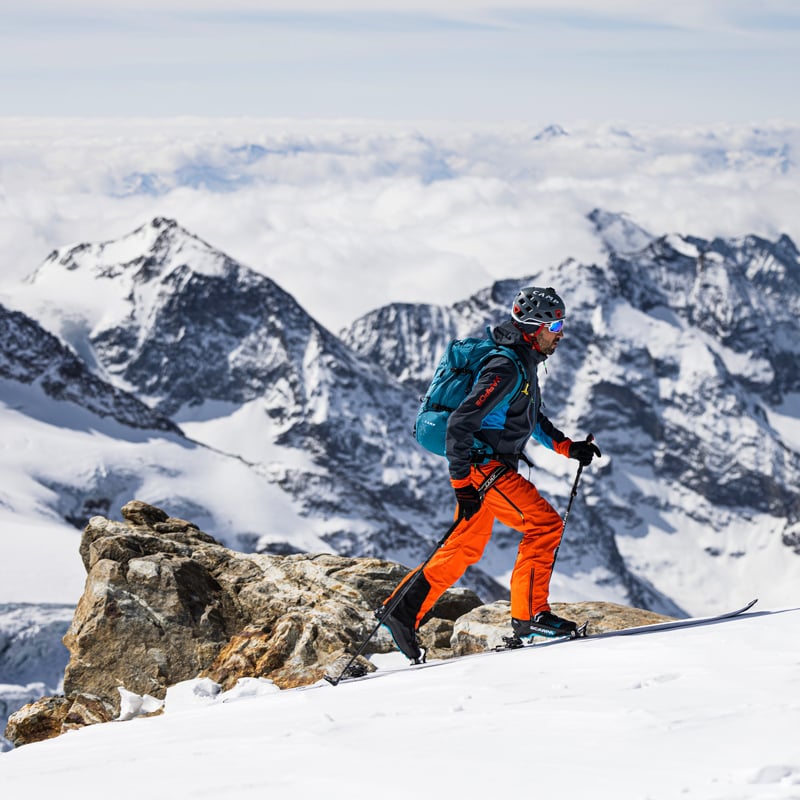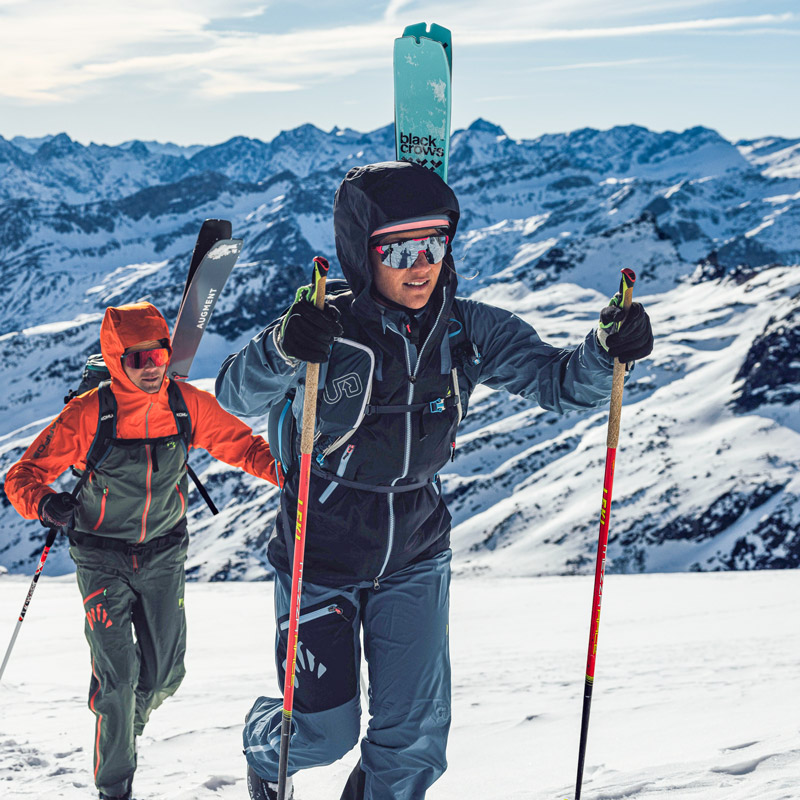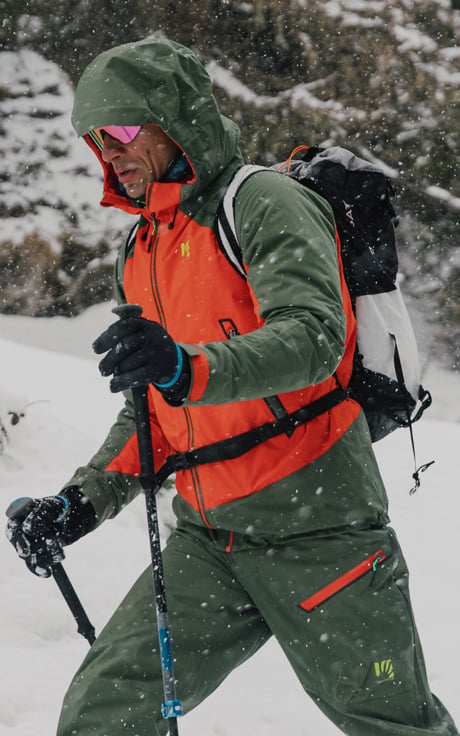
The temperature is dropping, and we’re getting excited to pull out our skis and ski mountaineering gear. The mountains are turning white, and the slopes are transforming into smooth and immaculate surfaces where we can seek to carve the perfect curve. We can already imagine the feeling of the powder under our skis, the effort of the climb, and the adrenaline of the descent. But how do we get ready for our outing? What backpack do we choose, and what do we put inside to make sure we have everything we need and nothing more, so we don’t have to carry unnecessary weight up the slopes? The experts will already have their strategy in mind, but those who are relatively new to ski mountaineering may not yet know exactly how to choose the essential equipment and what to avoid.
2. Avalanche transceiver, shovel, and probe
1. Backpack
Before we start to think about filling it up, it’s important to choose the right backpack for our ski mountaineering outing. A good backpack makes all the difference, especially when skiing off-piste.
Today there are many types available that are specifically designed for ski mountaineering. They feature a special pocket for your shovel and probe, as well as having special attachments for skis — essential to facilitate transport in technical and mountaineering sections. In recent years, we’ve seen the adoption of special backpacks with an airbag system, an accessory that ensures better flotation in the event of an avalanche.
For a one-day outing, the ideal volume is between 28 and 30 liters — remembering to always leave some empty space for items you start out wearing in the morning. During the climb you work hard and sweat, so especially on sunny days you may need to remove some outer layers.
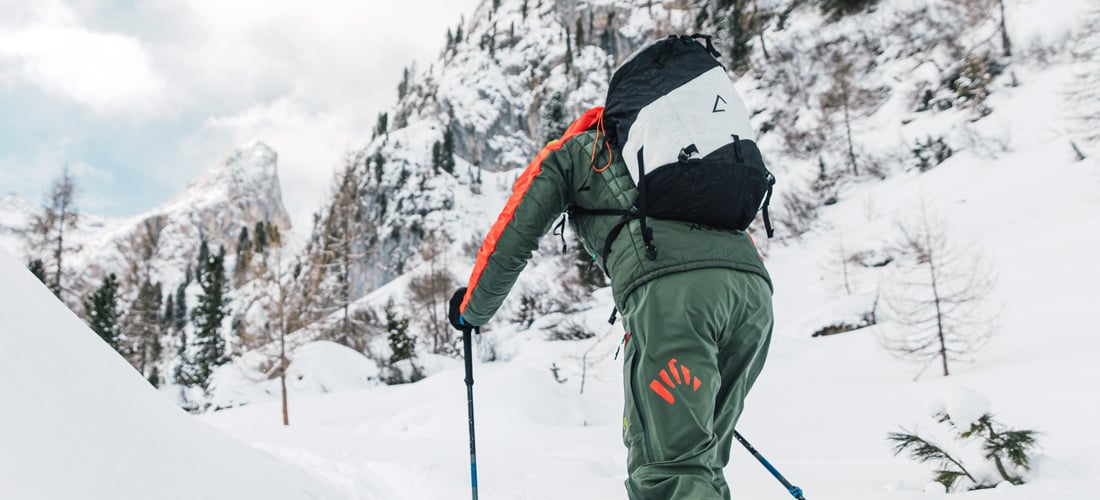
2. Avalanche transceiver, shovel, and probe
Together with your avalanche transceiver (which should not be carried in your backpack but worn or placed in the appropriate pocket in your clothing), a shovel and probe comprise the minimum safety equipment to always have with you in order to conduct a rescue in the event of an avalanche. The avalanche transceiver is a device that narrows the search area when a person is struck by an avalanche. The probe allows you to scan the area and identify the location of the victim. Then the shovel is used for digging.
3. First aid kit
A small kit containing plasters, ointments, gauze, bandages, disinfectant, a thermal blanket, and a few other useful tools for managing minor traumas and injuries. In the case of major accidents or traumas, the emergency services should be notified as soon as possible.
4. Extra base layer
The basic rule when engaging in aerobic activities, especially in winter, is to wear a base layer that enables moisture to be easily wicked away from the skin, thus allowing you to always stay dry. This is essential to keep from freezing.
The ideal choice is a base layer made of merino wool, a material that can insulate from both cold and heat — not to mention that merino wool features unique properties such as the ability to retain heat even when damp.
It’s also naturally antibacterial and controls odors. And it’s soft against the skin and provides protection from UV rays while offering high thermal insulation and breathability.
As an alternative to wool, you can opt for an extra base layer made of synthetic materials that offer a great warmth-to-weight ratio and excellent drying capacity.
Regardless, on a ski mountaineering trip it’s essential to remember to always carry a change of base layers with you in case of emergency.
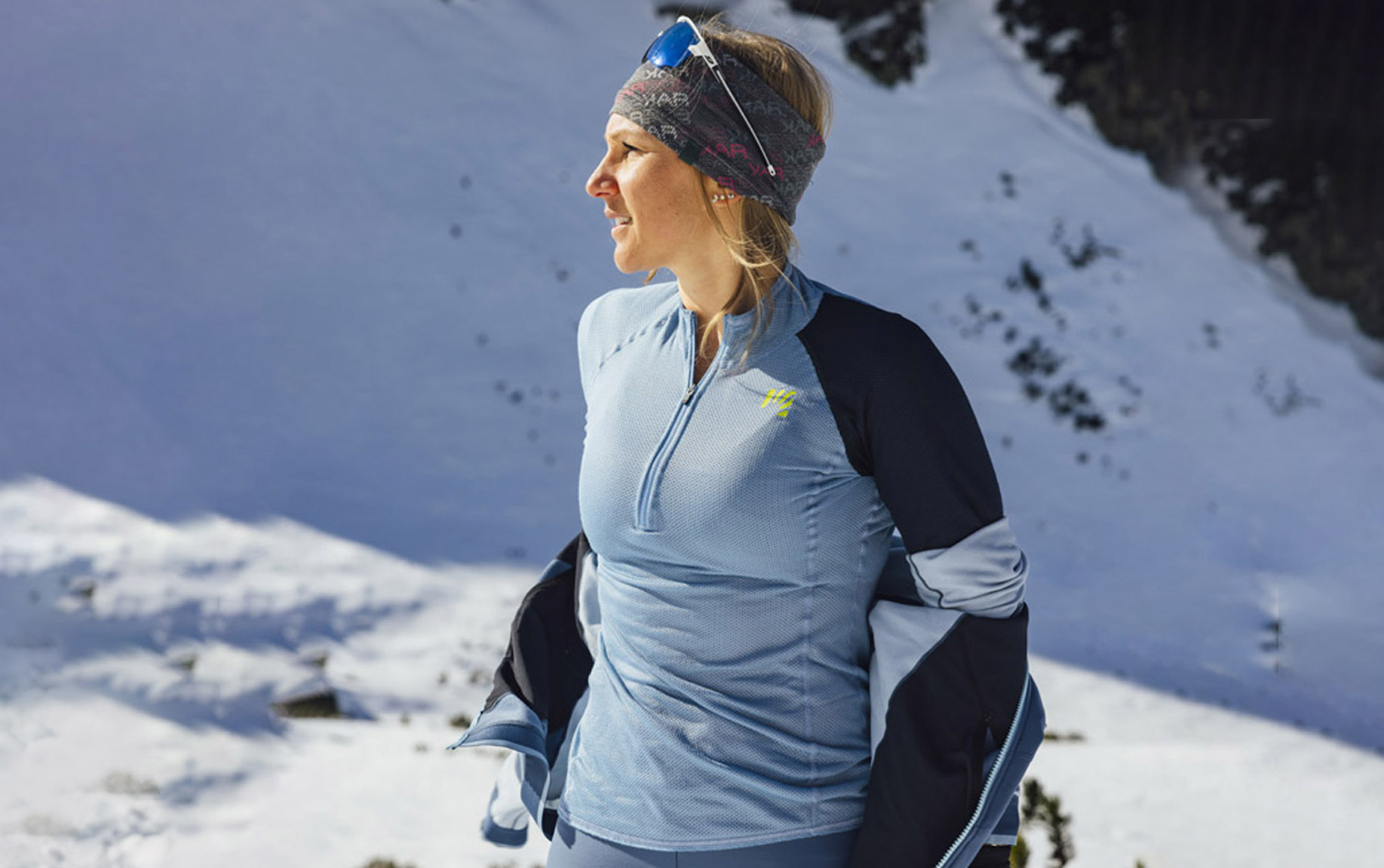
5. Change of accessories
In the winter, even a minor unexpected incident can turn into a difficult problem to solve. Finding yourself, for example, soaking wet can transform a beautiful day not only into a nightmare but also into a dangerous situation.
An extra pair of gloves and a cap, and also a pair of socks, can prove essential in case of need. All without adding too much weight to your backpack.
6. Space for outer and protective layers
It might seem trivial, but it’s important to remember to always keep a small amount of space free for technical clothing during your outing. When you start out, early in the morning, you wear many items of clothing (following the fundamental rule of dressing in layers) to protect yourself from the cold, such as a down jacket, a second layer, and possibly a waterproof shell and overpants. Then, with exercise, your body temperature rises and you remove layers. This is also important to allow for breathability and to keep you always cool and dry. If you don’t have free space in your backpack, you risk having to do the entire excursion without being able to take anything off, and that would certainly not be a pleasant situation.
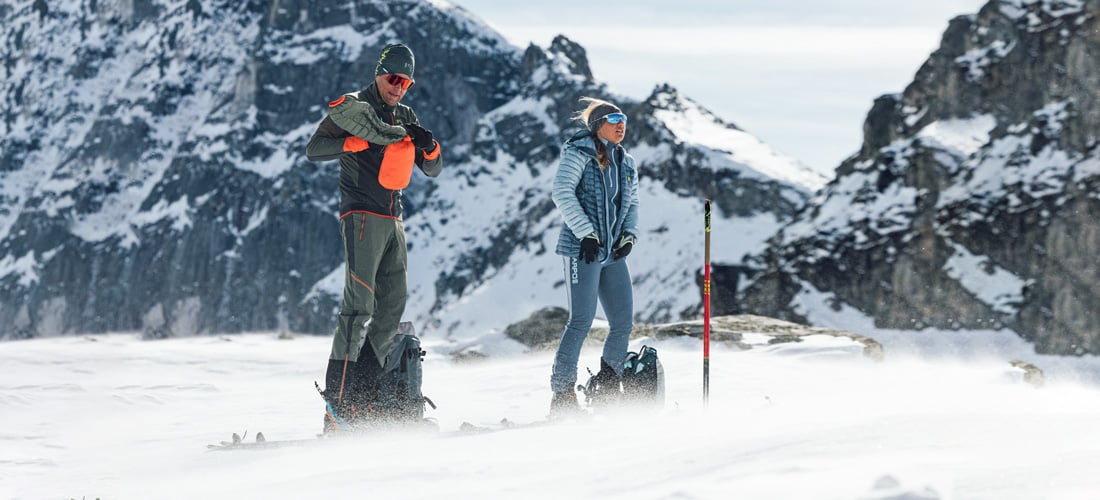
7. Food and water
Replacing the calories burned while climbing is essential to be able to enjoy the outing to the fullest without having problems and finding yourself halfway up the climb without the strength to continue or go back. This is why it’s important to remember to put a sandwich, some energy bars, or some fruit or honey in your backpack to reenergize yourself.
Likewise, it’s important to bring a water bottle or thermos of hot tea with you. In the winter you often don’t feel thirsty, but it’s important to remember to drink to stay hydrated by replacing lost fluids.
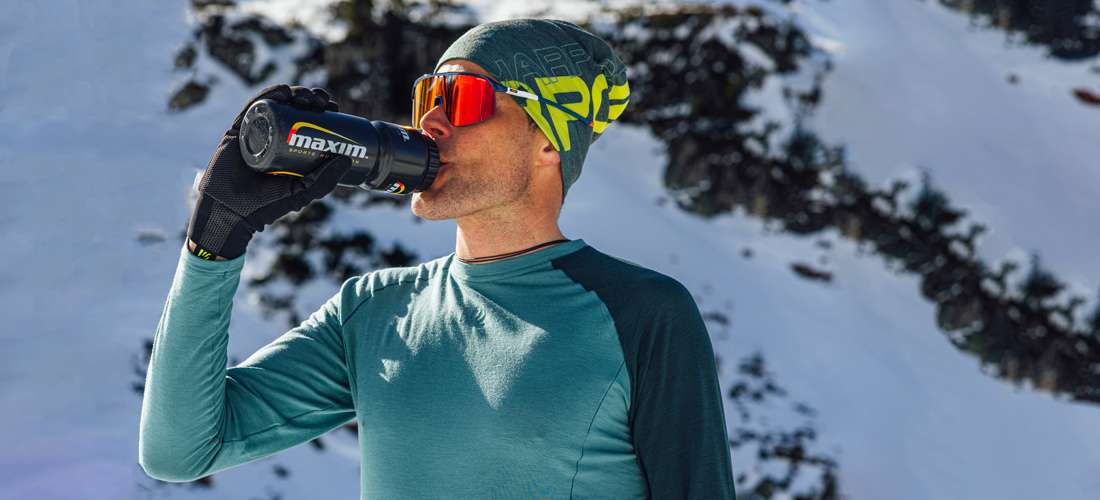
8. Sun protection
The sun is strong, even in the winter. For this reason, it’s important to always remember SFP 50 sunscreen and a good pair of sunglasses suitable for the high mountains.
The latter are essential to protect your eyes from the glare caused by the snow, otherwise you may risk snow blindness, a problem that occurs following continuous and prolonged exposure to the reflection of ultraviolet rays from the surface of the snow.
9. Crampons and ice axe
Depending on the outing and the type of conditions, you may need to add a pair of automatic crampons to your backpack, so that you can use them easily with ski boots, and an ice axe to manage any mountaineering-style sections and icy conditions.
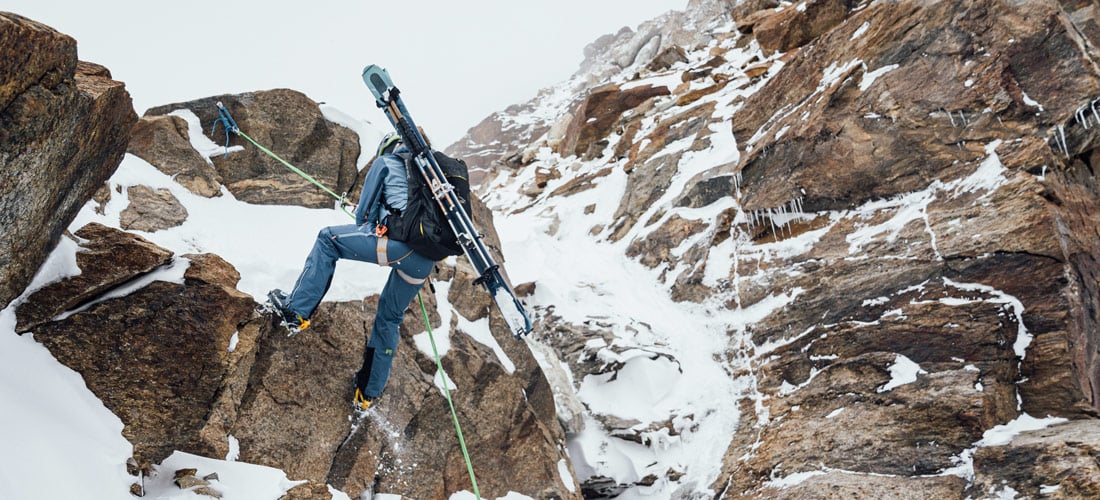
Conclusion
We’ve seen how to prepare a backpack for ski mountaineering, with all the essentials that you can’t do without on an outing, starting with the basic safety equipment (avalanche transceiver, shovel, and probe).
Without forgetting, obviously, base layers and outer layers, to make sure you stay dry and so you can change in case of unexpected events.
Also food and water, to keep yourself hydrated and to be able to refuel after the effort of climbing and descending.
Then sunglasses and sunscreen and, depending on the technical characteristics of the chosen route, crampons and an ice axe. All this while remembering to leave a small amount of empty space for storing items of clothing that you start the day wearing. Because climbing warms you up, and quickly.

